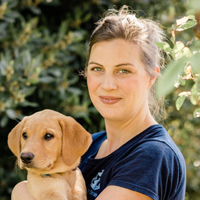17 dog behaviours and what they mean
First Published: 05/11/2018
Last Updated: 30/04/2024
Our dogs often communicate using body language…but do we listen? Whether it's the joyful 'whale eye' when they're feeling playful, a stress-induced yawn, or simply hanging out with their tongue out on a hot day, understanding these signals can deepen the bond between you and your pet.
This picture-led guide will take you through various cues that indicate when your dog is relaxed and happy or feeling stressed and anxious. By learning to read these subtle signs, you'll be better equipped to respond to your dog's needs.
When happy or relaxed:
Let’s start with the body language dogs display when all's well. Nothing makes us smile more than seeing our dogs happy and enjoying life and sure enough, you’ll be able to spot this from their body language. Each signal listed below means that a dog is content and relaxed:
1. Play bow
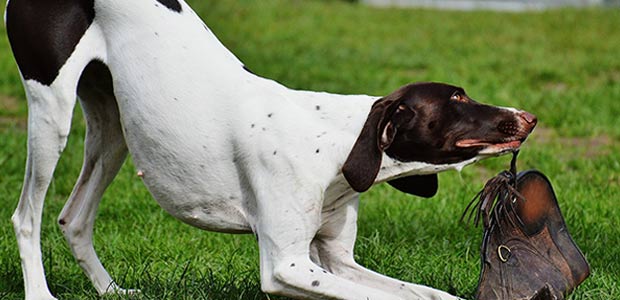
This gesture, where a dog lowers its front legs and raises its backside, is a universal sign of playfulness and an invitation to play. It shows that your dog is in a light-hearted mood and that her actions are all meant in fun, not aggression.
2. Relaxed facial expression
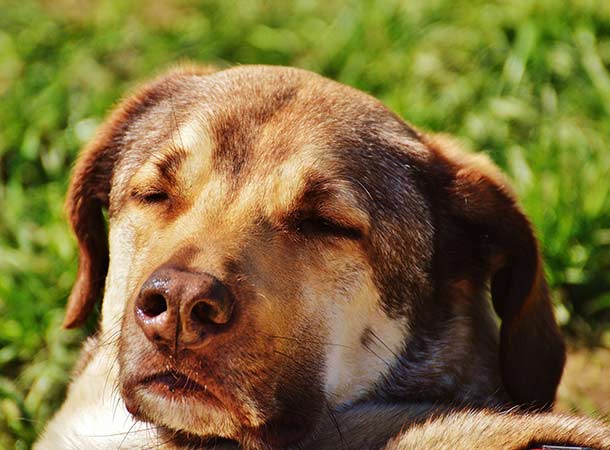
A dog with a relaxed facial expression will often have a slightly open mouth with a lolling tongue and soft eyes. There may be no tension or signs of stress around the dog’s forehead or eyes. If your dog looks relaxed like this it's likely they feel safe and comfortable.
3. Rocking horse motion

When dogs are engaged in play, they may move back and forth with excitement. This fluid ‘rocking horse’ motion often involves playful jumps and bounces, and suggests they're having great fun and want to play more.
4. Wagging tail/wiggling bottom
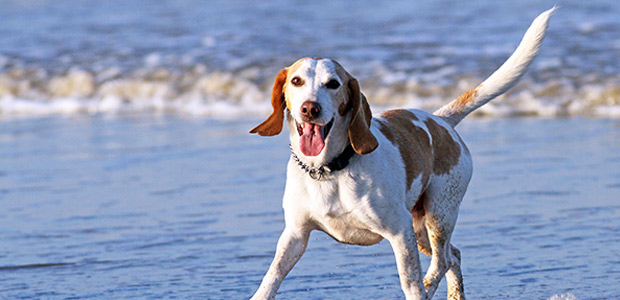
While a wagging tail can indicate different moods, in a relaxed and happy dog, it usually involves a soft, sweeping tail movement and may include a wiggling bottom. These movements are often seen when the dog is very pleased and sees someone they love.
5. Happy facial expression

A dog's happy expression may resemble a smile, where the mouth is open and relaxed, the tongue may hang out, and the eyes appear bright and happy. This expression, known as a 'submissive grin,' can sometimes be mistaken for aggression, but it's actually a sign of friendliness and contentment.
When stressed or nervous:
When stressed and nervous, your dog's behaviour can vary. The following signs show how dogs attempt to relieve stress or alleviate potential threats:
6. Yawning
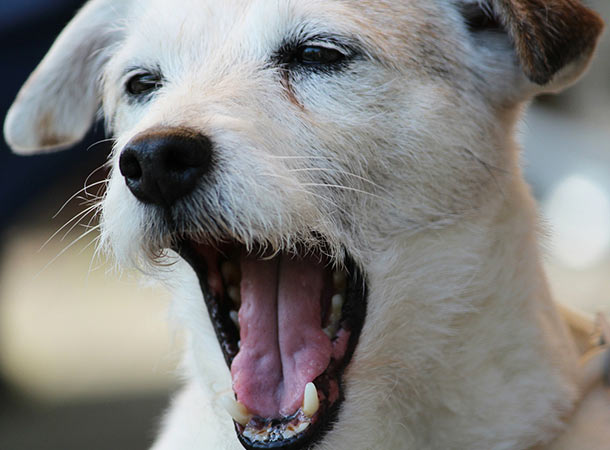
Yawning in dogs can be a sign of anxiety, and they may use it to calm themselves and others around them. Dogs often yawn in tense situations and this should be interpreted as a sign that they need a break from whatever's stressing them out.
7. Lip licking
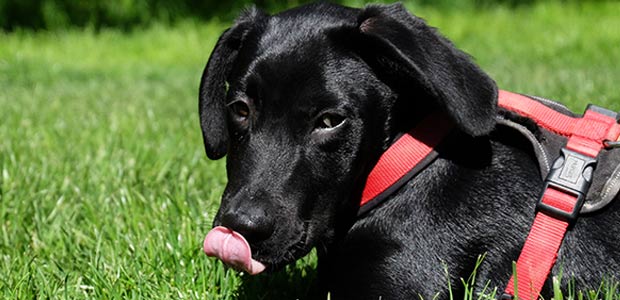
Lip licking or quick tongue flicks (people often ask why does my dog stick his tongue in and out like a snake) are another signal that your dog is stressed or nervous. This subtle sign can be easy to miss but it's important to understand when your dog's not comfortable.
8. Piloerection (hackles)
This is where the hackles – on the back of a dog’s neck – stand on end. It can be a response to various emotional states, not just aggression. Hackles can rise during times of excitement, uncertainty, or fear, and is a physiological response similar to goosebumps in humans.
9. Body freeze
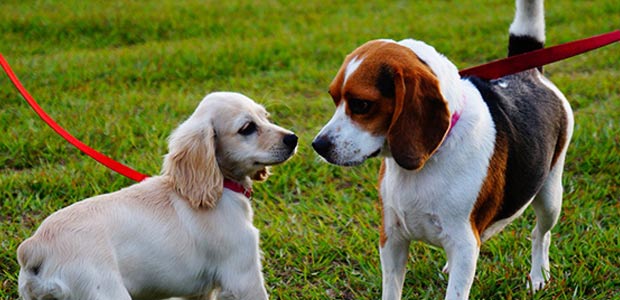
Your dog's body may freeze up when they feel threatened or are preparing their response to a threat. This behaviour allows your dog to pause and assess the situation before deciding whether to fight, flight, or appease.
10. Faffing

Faffing or displacement behaviour, such as sniffing the ground or looking away, happens when a dog is unsure how to react in a social situation. It is a non-threatening way to avoid conflict without engaging or retreating.
11. Whale eye
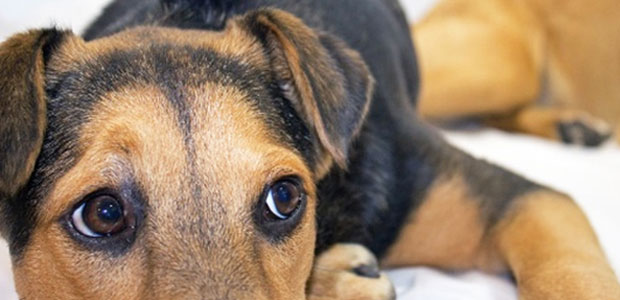
When dogs show the whites of their eyes, it's a clear indicator of discomfort or stress. This 'whale eye' is often accompanied by a head turn, where the dog avoids direct eye contact with the threat, signaling a desire to avoid conflict.
12. Shaking
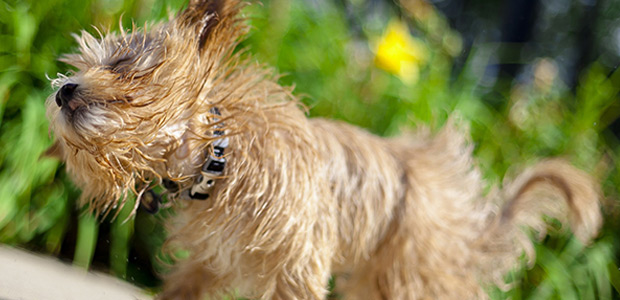
You might notice your dog shaking as if they're wet, even when they’re not. This can happen when they're stressed. It's your dog's way of shaking off the tension and hitting the reset button after a nerve-racking experience.
13. Tense jaw

When you see your dog with a tense jaw, their teeth slightly bared and lips pulled back, take note. This can be a sign they’re feeling stressed or aggressive. It’s a clue that they’re not comfortable with what’s happening, and if things don’t change, their behaviour might escalate into something more aggressive.
14. Turning away
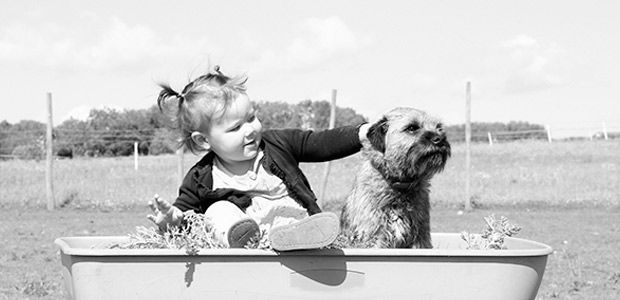
When your dog turns their head or body away, it’s often their way of saying they’d rather not deal with a tense situation. This is a clear signal that they’re feeling uncomfortable and aren’t interested in making things worse. It’s their way of stepping back from conflict.
15. Lowered tail
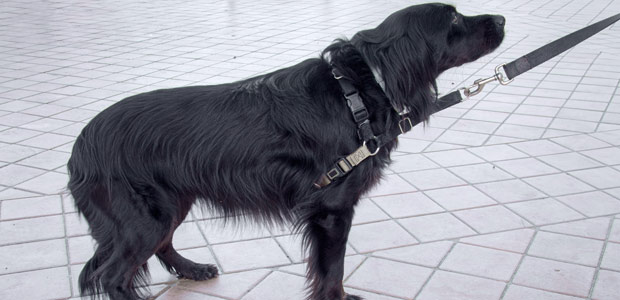
A lowered tail, especially one tucked between the legs, signals fear, submission, or anxiety. This position is often seen in dogs who feel threatened and want to appear smaller and less threatening to whatever is causing their fear.
16. Panting
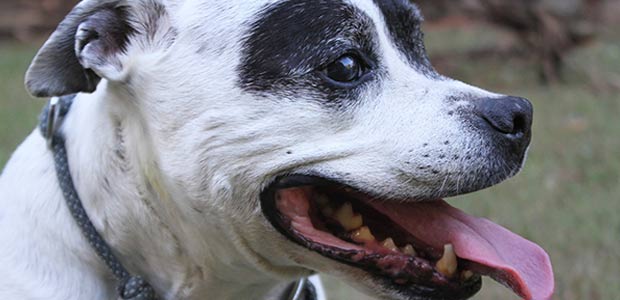
While panting can simply mean your dog is hot, it can also be a sign of stress, especially if you notice it when they’re not overheating. Look for shallow and rapid breaths, which might come with some drooling or lip licking. This can be a telltale sign your dog is feeling stressed out.
17. Dog with tongue out
When you see a dog with their tongue hanging out, it can mean a couple of things. If they're just lounging around, it’s often a sign they’re feeling relaxed and content. But if combined with anxiety, pacing or whining, it could mean they're feeling stressed or unwell. If their tongue is out more than usual or they’re having trouble keeping it in their mouth, check in with your vet.
Understanding your dog's body language
Understanding your dog's body language is really important. If you can spot signs that your dog is distressed or agitated early on, you are able to remove their source of stress/agitation before the dog's behaviour worsens. By knowing what your dog is trying to tell you, you are better equipped to prevent accidents.
How to respond to your dog's body language
Understanding your dog's body language is one thing, but knowing how to respond properly can really help strengthen your relationship. Here’s what you can do:
Positive reinforcement
If your dog looks happy or relaxed, it’s a great chance to make them feel loved. Give them some fuss, tell them they're good, or even offer a treat. This doesn't just make them feel great, it also encourages them to keep up the good behaviour.
Give them space
When your dog shows signs of stress or nervousness, like yawning or showing the whites of their eyes, it’s best to give them a bit of room. Don’t crowd them and make sure they have a quiet spot to unwind. Knowing when to step back can help avoid making their stress worse and prevent any snappy behaviour.
Seek professional help
If your dog often seems stressed, scared, or aggressive, it might be time to call in a professional. A dog trainer or behaviourist can offer specific advice and training to help manage your dog’s behaviour more effectively.
Stay calm and consistent
Your dog picks up on how you’re feeling. By staying calm and consistent in how you act, you can help settle any nervous feelings they might have and build their confidence and trust.
Need more advice about your dog's body language?
Learning to understand your dog’s body language can take time. Hopefully, this advice will help you recognise the most important signs. If you’re worried about any behaviour issues, please don’t hesitate to talk to your vet today.
Find your nearest vet using our find a vet page, or speak to a vet online using our video vet service.


